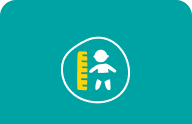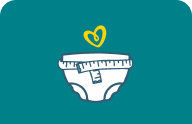Everything to Know About Dream Feeding Your Newborn
At the beginning of a baby’s life, their schedule revolves around feeding – they need to eat around-the-clock. They also need a lot of sleep in the early days, despite having to wake every few hours to eat. For parents and caregivers this often means frequent wakeups throughout the night.
Even though it’s hard to get a newborn on a schedule at the beginning of their life, once their sleep patterns begin to become a little more organized, there are ways to make sure your baby gets fed while also getting you both some extra sleep.
Plus, who wouldn’t want to avoid getting jolted awake by a hungry screaming baby?
Introducing the dream feed! Read on for answers to questions like “what is dream feeding” and “how do I dream feed”, and more on the benefits of adding a dream feed into your life.
What is Dream Feeding?
Dream feeding is a technique used by parents to help their babies sleep longer at night. It involves feeding the baby while they are still asleep, usually right before the parents go to bed themselves.
Dream feeding can be particularly helpful around the time your baby’s circadian rhythm is beginning to mature. This can be around 2-4 months of age when your baby is starting to sleep slightly longer stretches and needs to eat often, but not as often as they did at the beginning of their life.
The idea is that by feeding your baby while they’re still asleep, they will sleep longer stretches without waking up hungry. Even though the baby is sleeping, they often have no problem latching onto the bottle or breast and feed effectively.
While dream feeding can be a useful strategy for some families to extend the baby’s sleep, it doesn't work for everyone. Some babies might not feed well while drowsy, or it could potentially lead to more night wakings if the baby starts to associate sleep with feeding.
How Do I Dream Feed My Newborn?
Dream feeding usually involves lifting your baby out of their sleep space and rousing them just enough to start feeding without fully waking them. Steps to dream feed your baby:
Keep the lights and your voice low as you approach your baby
Pick your baby up from their crib
Gently rouse your baby without waking them – give their feet a tickle, touch their cheek with a wet wipe or wash cloth, or even change their diaper if it’s soiled
Once roused, hold them in their usually feeding position and move the bottle or breast towards their lips – most of the times a baby will start feeding without waking
Let you baby eat until they’re done
Gently burp them
Put them back in their sleep space
Head back to bed!
What Time of Night Should I Dream Feed My Baby?
It’s recommended you dream feed your baby right around the time you go to sleep for the night, or about 2-3 hours after their last feed.
Feeding them before you go to sleep can help you get a longer stretch of sleep before they wake again to eat. Even if they don’t take a full feed, topping up their stomach can help them stay asleep longer.
Many sleep consultants recommend you dream feed your baby between 10 pm and midnight. You want your baby to be in a deep sleep, so it’s less likely they wake when you take them out of their sleep space.
How do I Burp My Newborn During a Dream Feed?
Burping your newborn during a dream feed is a common question parents have. The concern is often that you don’t want to wake your baby by burping them!
The advice is to burp your baby after a dream feed in the exact position you usual burp them in during the day – except be more gentle than you are during the day.
The Pros and Cons of Dream Feeds
There are many pros and cons of dream feeding your baby Pros:
Avoid the feeling of being jolted awake by a screaming hungry baby
Take back a little control of your night and schedule
Enjoy more sleep – which can help improve your mood and relationship with your partner and friends, reduce drowsiness (and make you safer), and help you be a more present, happy parent
Cons:
Dream feeding can form a habit of your baby waking up at the same time every night to eat (even if they’re not hungry!)
During normal waking hours, it’s not recommended you feed your baby until they fall asleep – this can cause a sleep association or a sleep crutch, where your baby relies on feeding to fall asleep and can’t fall asleep without it. If your baby tends to wake during a dream feed, they may start to develop a sleep crutch and struggle to fall asleep independently, which can make bedtime harder as they get older.
Some experts say to stop dream feeding by the time they’re around 4 months old or when they can sleep 3-4 hours without feeding. while this doesn't mean you don’t need to stop feeding your baby if they wake to eat, it may be harder to drop the dream feed once it works!
Worried your baby relies on feeding to fall asleep or has another sleep habit you want to break? Take this free 3-minute sleep assessment and let the Smart Sleep Coach by Pampers™ app create a personalized plan to help support you through your sleep struggles. From developing a sleep schedule that’s aligned to their circadian rhythm or walking you step-by-step how to build healthier sleep habits, the app’s scienced-back approach is used by hundreds of thousands of parents to reclaim their sleep!
The Bottom Line
The first few months of babyhood can be difficult, especially when it comes to having to wake around the clock to feed your baby. Adding a dream feed into your schedule can help you get a few extra hours of sleep and a bit more control of your night, while also making sure your baby is nourished.
If dream feeding is not helping your baby sleep longer stretches, take this free sleep assessment to get a plan to uncover what else you can do to support your baby sleeping like a dream!
How We Wrote This Article The information in this article is based on the expert advice found in trusted medical and government sources, such as the American Academy of Pediatrics and the American College of Obstetricians and Gynecologists. You can find a full list of sources used for this article below. The content on this page should not replace professional medical advice. Always consult medical professionals for full diagnosis and treatment.








